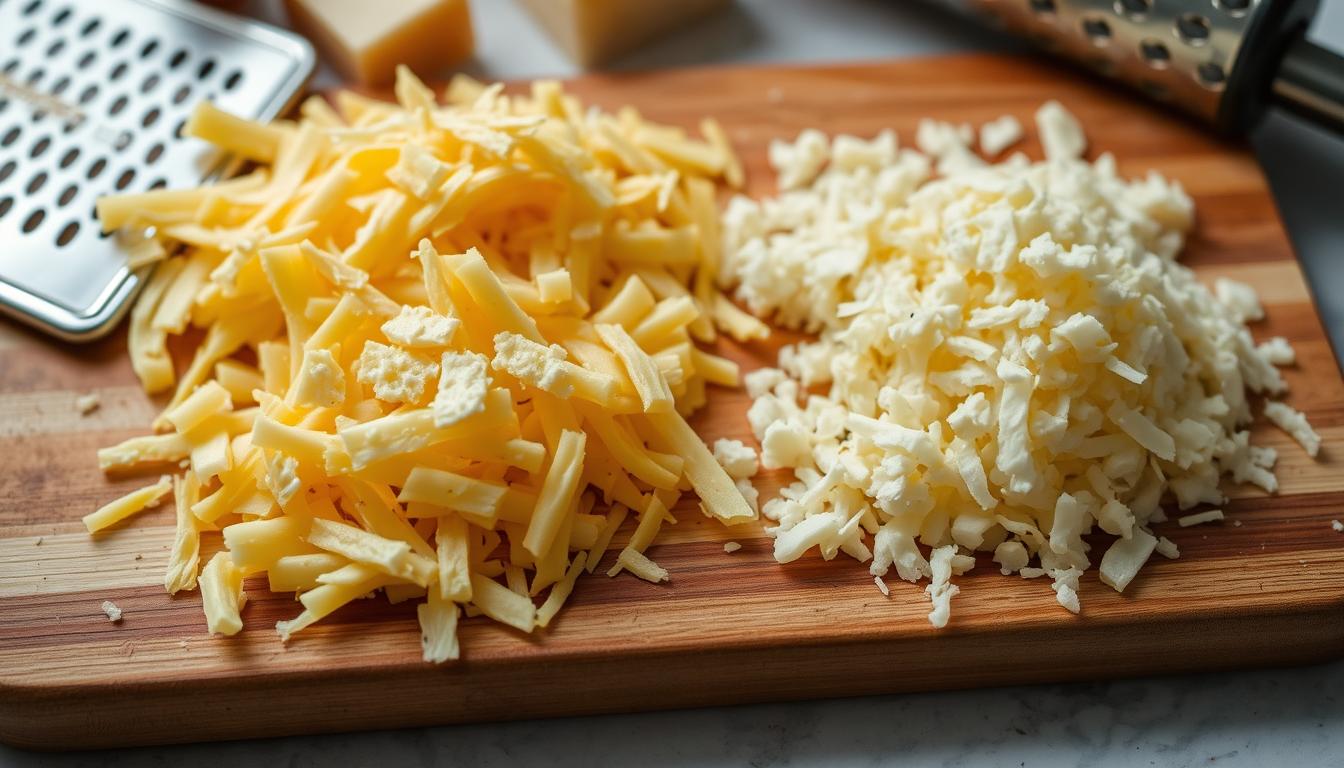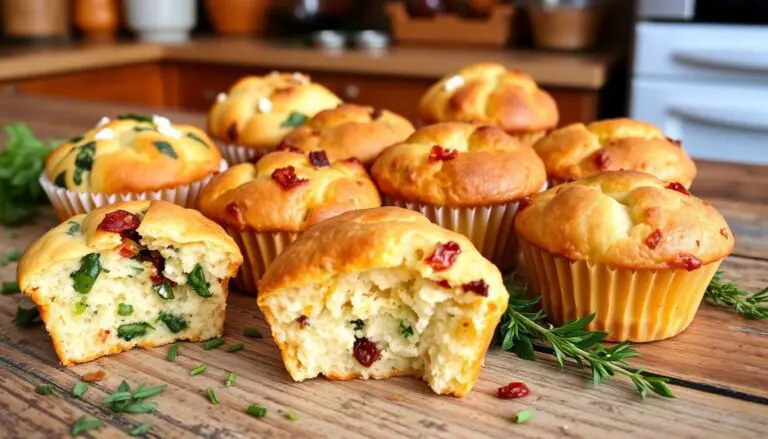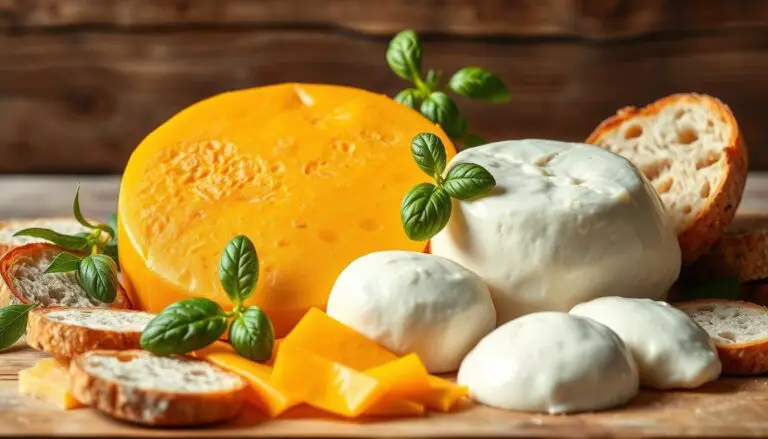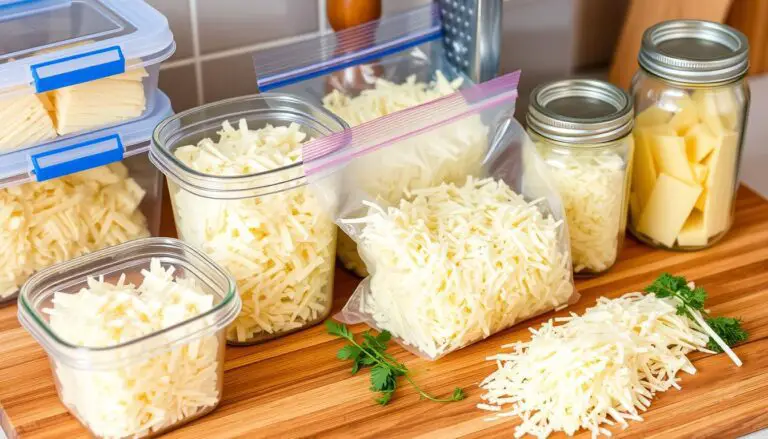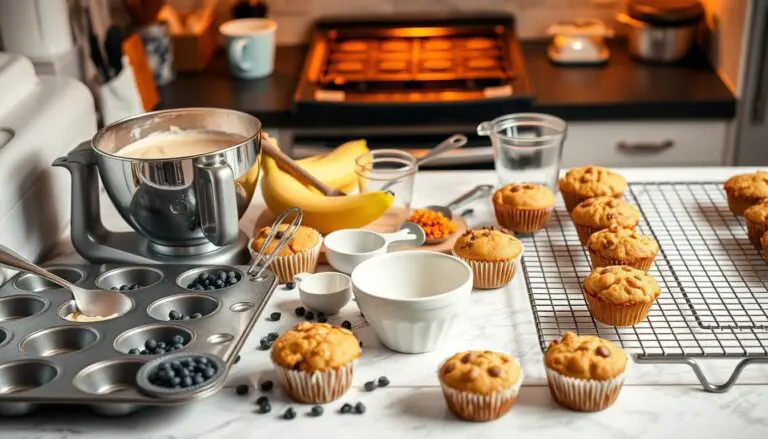Is Shredded and Grated Cheese the Same? Find Out!
Ever wondered if shredded and grated cheese are the same thing? Or are they different? The world of cheese is vast, with many forms to explore. Knowing the difference between shredded and grated cheese can make your dishes better.
Grated cheese, like Parmesan, is often used for its sharp flavor. Shredded cheese, on the other hand, includes softer cheeses like Cheddar and Mozzarella. Each type has its own use in cooking, adding something special to your meals. Let’s dive into the world of cheese forms and find out how to pick the right one for your recipes12!
Key Takeaways
- Understanding the basic differences between shredded and grated cheese is crucial for enhancing your cooking.
- Grated cheese has a smoother texture and melts more quickly compared to shredded cheese.
- Softer cheeses are best for shredding, while harder cheeses are ideal for grating.
- Shredded cheese provides a chewy melted texture, making it perfect for dishes like casseroles and nachos.
- Store-bought shredded cheese may contain anti-caking agents, affecting its melting quality.
Understanding Cheese Forms
Cheese comes in many forms, each with its own use in cooking. Knowing these forms helps chefs and home cooks pick the right cheese. The main forms are blocks, slices, shredded, and grated. Each adds something special to our dishes.
Various Forms of Cheese
Each cheese form has its own texture and melting style. This makes them perfect for different recipes and tastes. Here are the main cheese forms:
- Blocks: Solid pieces that can be sliced, grated, or shredded.
- Slices: Ready for sandwiches or burgers.
- Shredded: Made by shredding, great for melting in casseroles and pizzas3.
- Grated: Fine strands for quick melting, perfect for pasta and salads3.
Popular Cheese Types Used in Cooking
Knowing the different cheese types is key for cooking. Here are some favorites:
| Cheese Type | Best Form | Culinary Uses |
|---|---|---|
| Cheddar | Shredded | Casseroles, pizzas, quesadillas |
| Parmesan | Grated | Pasta, soups, salads |
| Mozzarella | Shredded | Pizza, lasagna |
| Gruyère | Grated | Fondue, sauces |
Choosing the right cheese can change your dish. Shredded cheese melts well for hot dishes. Grated cheese adds flavor to salads and soups34.
The Difference Between Shredded Cheese and Grated Cheese
Knowing the difference between shredded and grated cheese is key for any cook. Shredded cheese has longer strands, making it gooey when heated. Grated cheese, on the other hand, melts fast and is great for sauces.
Texture and Appearance
Texture and look matter a lot in cooking. Grated cheese melts fast, like coarse sand, and is perfect for sauces. Shredded cheese melts slower, ideal for lasagna and nachos. This makes each dish special.
Common Cheese Types for Each Form
Choosing the right cheese is crucial. For shredding, Cheddar and Mozzarella are top picks for melting in tacos and casseroles. Hard cheeses like Parmesan and Pecorino Romano are best for grating. They add flavor to pasta and soups.
Is Shredded and Grated Cheese the Same?
Many people think shredded and grated cheese are the same. But they are not. Shredded cheese is chunky, giving a strong feel in your mouth. Grated cheese is finer, blending well into dishes.
The Misunderstanding of Terms
This mix-up comes from how we talk about cheese in cooking. Both types are used in many recipes. But knowing the differences is key. Shredded cheese is about 4 ounces per cup, while grated is less, around 2 ounces per serving5.
Key Characteristics of Each
Shredded cheese is great for melting and as a topping. Grated cheese, being finer, works well in sauces and baked goods. For instance, 1/4 pound of cheese is about 1 cup grated, and half a pound is 2 cups6. Knowing these differences helps in choosing the right cheese for your recipes.
Culinary Uses of Shredded Cheese
Shredded cheese is a versatile ingredient that makes dishes more flavorful and creative. It’s used in many meals, becoming a key item in kitchens. Shredded cheese can be a topping or a main ingredient in various recipes, showing its value in cooking.
Ideal Recipes for Shredded Cheese
Shredded cheese adds great texture and taste to many dishes. It’s especially good in:
- Quesadillas: Its melting quality makes for gooey, delicious quesadillas.
- Pizzas: It creates a bubbly cheese layer that everyone loves.
- Casseroles: It adds richness and texture to support other ingredients.
- Baked Ziti: It boosts the flavor, making the dish indulgent.
- Ultimate Grilled Cheese: It takes the taste to a new level, ensuring every bite is satisfying.
How Shredded Cheese Enhances Dishes
The unique texture of shredded cheese melts well, blending into dishes seamlessly. Its thick strands create a creamy texture when melted, making meals special. Shredded cheese also enhances flavors and adds nutrition, but pre-packaged options may have additives like cellulose7.
Grating your own cheese can be more cost-effective and flavorful, reducing waste7. Cheeses like Cheddar and Gouda are great for shredding8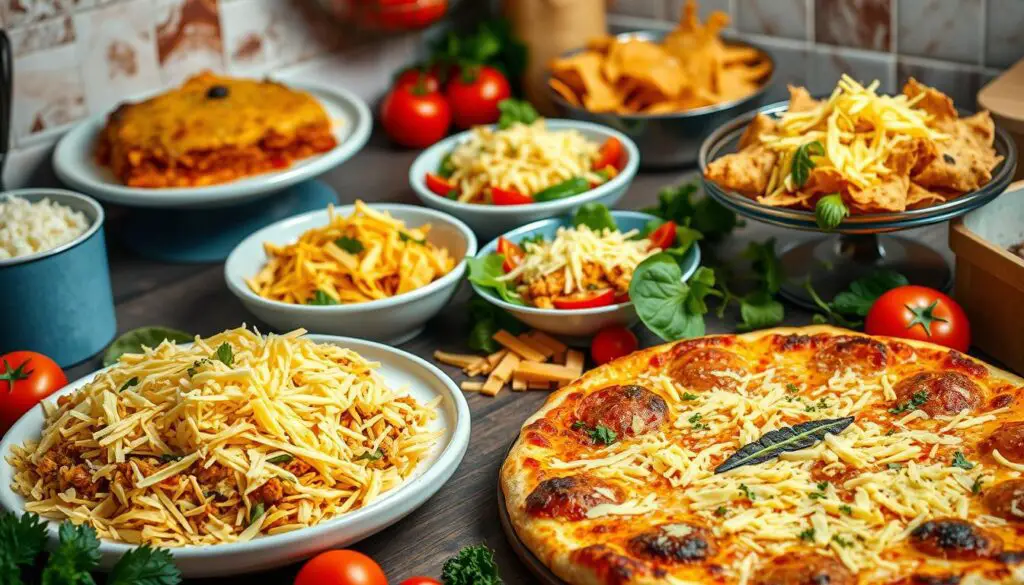
Using shredded cheese in cooking not only improves dishes but also encourages creativity in the kitchen.
| Dish | Shredded Cheese Recommendations | Preparation Tips |
|---|---|---|
| Quesadillas | Monterey Jack, Cheddar | Use a combination for optimum melt. |
| Pizza | Mozzarella, Provolone | Combine for a gooey topping. |
| Casseroles | Colby Jack, Cheddar | Mix in before baking for a cheesy crust. |
| Baked Ziti | Ricotta, Mozzarella | Add shredded cheese to layers for gooey texture. |
| Grilled Cheese | American, Cheddar | Use at least two types for depth of flavor. |
Culinary Uses of Grated Cheese
Grated cheese is key to making many dishes taste better. Its fine texture melts quickly and evenly. It’s great for adding flavor to sauces or as a topping for hot meals.
Best Practices for Using Grated Cheese
For the best taste, add grated cheese just before serving. This keeps its flavor and lets it melt a bit. It’s also good in light pasta dishes to add richness without being too much. Check out grated cheese recipes to see how it can make simple meals special.
Common Dishes Featuring Grated Cheese
Many classic dishes get a boost from grated cheese. For example, spaghetti and meatballs are better with Parmesan. Caesar salads are enhanced by Pecorino Romano. Here are some other favorites:
| Dish | Grated Cheese Type |
|---|---|
| Spaghetti and Meatballs | Parmesan |
| Caesar Salad | Pecorino Romano |
| Pasta Alfredo | Parmesan |
| Pizza | Asiago |
These dishes show how grated cheese can add flavor and versatility. Knowing how to use it can make your cooking even better. Grated cheese can take your dishes to the next level.
Cooking Ingredients: Which One to Choose?
Choosing between shredded and grated cheese depends on the cooking needs. Shredded cheese is great for dishes that need a chewy texture and visible strands.
When to Use Shredded Cheese
Shredded cheese is best for shredded cheese recipes needing strong flavor and texture. It’s perfect for nachos, quesadillas, and pizzas. It melts into a stringy mess that everyone loves.
Shredded cheese also works well in casseroles and sandwiches. It keeps its shape better when heated. Many people choose to shred cheese themselves to avoid additives like powdered cellulose and natamycin. These additives help keep cheese fresh but can be unhealthy9.
When to Use Grated Cheese
Grated cheese is ideal for grated cheese applications where quick melting is key. Its fine texture is great for soups and salads, where it melts fast3. It’s also good for topping pasta and adding flavor to salads.
Grated cheese melts quickly and evenly, making dishes creamy without long heating. Both grated and shredded cheese can be used interchangeably, depending on the dish’s texture and taste.
| Type of Cheese | Texture | Best Use Cases |
|---|---|---|
| Shredded Cheese | Thick strands | Nachos, Casseroles, Quesadillas |
| Grated Cheese | Fine particles | Pasta, Soups, Salads |
The Melting Qualities of Different Cheese Types
Knowing how different cheeses melt is key to making great dishes. The way cheese is shredded or grated affects its melting. Shredded and grated cheese serve different purposes in cooking.
How Shredded Cheese Melts
Shredded cheese melts slower than grated cheese. This is especially true for cheddar, which melts at about 150°F (66°C)10. It creates a chewy texture that’s perfect for casseroles.
How Grated Cheese Melts
Grated cheese melts fast and evenly. It’s great for sauces or pasta. Mozzarella, for example, melts into a soft, stretchy mess11. Using sodium citrate can make cheese sauces smooth and creamy10.
| Cheese Type | Melting Point | Texture When Melted | Common Uses |
|---|---|---|---|
| Cheddar | 150°F (66°C) | Chewy, thick | Casseroles, toppings |
| Mozzarella | Not specified | Soft, stretchy | Pizza, pasta |
| Gruyère | Not specified | Bubbly, savory | Fondue, sauces |
| Parmesan | Not specified | Smooth, fine | Sprinkled on dishes |
Understanding cheese melting helps in cooking. It leads to better recipes and presentation. For more on cheese melting, check out this resource101211.
Cooking Techniques for Cheese Preparation
Using the right cooking techniques can make a big difference in how cheese tastes and feels. Knowing the difference between shredding and grating can improve your cooking. It helps you pick the best method for your dish.
Shredding Cheese: Tools and Tips
Shredding cheese needs special tools for long, thick strands. You can use box graters, food processors, or shredders. Chilling the cheese first makes shredding easier and more efficient8.
Some cheeses are better for shredding than others. Soft cheeses like Cheddar and Mozzarella make great, chewy shreds1. Semi-hard cheeses, such as gouda and Swiss, are also popular8.
Grating Cheese: Tools and Tips
Grating cheese needs finer tools like microplanes for a light, fluffy texture. Grated cheese melts fast, perfect for pasta and pizza1. Use a silicone potholder when grating hard cheeses to avoid accidents8.
Choosing the right cheese for grating is important. Hard cheeses like Parmesan and Pecorino Romano work well. Freezing hard cheese for 30 minutes before grating makes it easier and prevents sticking8.
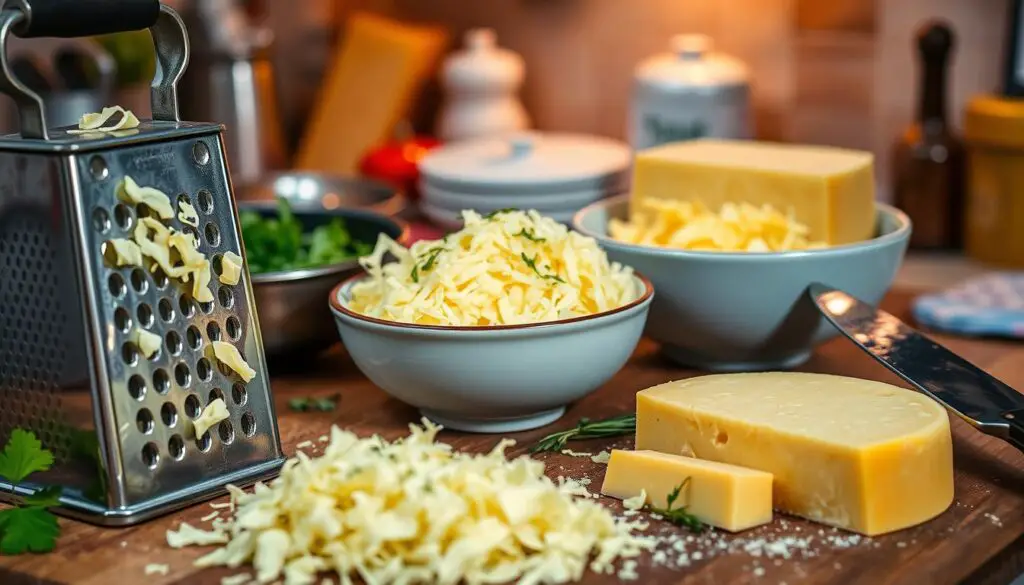
| Cheese Type | Best for Shredding | Best for Grating |
|---|---|---|
| Cheddar | ✔ | ✖ |
| Parmesan | ✖ | ✔ |
| Mozzarella | ✔ | ✖ |
| Pecorino Romano | ✖ | ✔ |
| Gouda | ✔ | ✖ |
Mastering shredding and grating techniques lets cooks control cheese’s texture and melting. This can make recipes more delicious and balanced.
Grated cheese is fine and powdery, great for sprinkling. Shredded cheese is thicker and more substantial3. Knowing these differences helps cooks improve their dishes.
Common Problems with Pre-packaged Cheese
Pre-packaged cheese is handy for those with little time to cook. But, it often has hidden problems. A big issue is the use of anti-caking agents. These help prevent clumps in shredded cheese but can change its taste and texture. For example, grated Devondale mozzarella has additives 460 and 200, while the block version does not13.
Many people worry about the health effects of these additives. They say we should check the ingredients list carefully. This is because more people are learning about the dangers of processed foods13.
Understanding Anti-caking Agents
Anti-caking agents are key to keeping pre-packaged cheese good. They use things like cellulose gum, made from plants. This gum helps prevent cheese from sticking and improves its texture14.
Some think washing shredded cheese can get rid of cellulose. But most agree it’s safe to eat and doesn’t harm us14.
Texture Differences in Fresh vs. Packaged Cheese
Fresh cheese melts better than packaged cheese. This is because packaged cheese often has additives that affect its melting. People often choose block cheese over grated for better taste and texture13.
This choice shows that many want higher quality in their food. Over 500 comments on social media show people’s preferences and experiences13.
Conclusion
Knowing the difference between shredded and grated cheese is key for better cooking. Each type has its own uses in the kitchen. Shredded cheese, like Mozzarellissima Natural Shredded Cheese, is great for topping casseroles and pasta. Grated cheese is essential for adding flavor to salads and soups.
Understanding these differences helps home cooks improve their dishes. It’s also important to know the right amounts. For example, one cup of shredded cheese is about 4 ounces15. This ensures your recipes turn out right.
Choosing the right cheese, whether shredded or grated, makes a big difference in your meals. With so many options, you can find the perfect cheese for your taste and cooking style. Learning about cheese will make your cooking more enjoyable and delicious.

